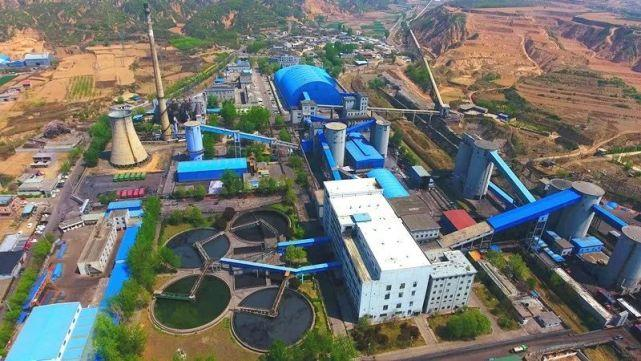
Original by Wu Zhaolong from Zhao Gu Yi Coal Preparation Plant
Translated and Re-edited by HOT (Chengdu) Industries Co Ltd
Abstract: This article outlines the importance of coal slurry reduction in coal preparation plants and introduces the working principle of the new roller disc screen. The practical application at the Zhao Gu Yi Mine coal preparation plant shows that after the application of the new screen, not only has the coal preparation process been improved, achieving the direct use of raw coal as a product and reducing coal slurry, relieving environmental pressure, but also maximizing the production efficiency of the coal preparation plant.
1. Overview of the Coal preparation Plant
Zhao Gu Yi Mine coal preparation plant is an important smokeless coal washing and processing base of Henan Energy and Chemical Group. It started construction in October 2007 and was put into operation on May 10, 2009, with a washing capacity of 3.00 Mt/a. The designed coal preparation process includes shallow groove sorter for main repreparation of lump coal, pressure three-product heavy medium cyclone sorter for repreparation of fine coal with mud removal, spiral sorter and TBS sorter for coarse coal slurry, and concentration and pressure filtration for coal slurry water. The precision of the preparation process is high, with high yield of clean coal, reliable and flexible system, and strong adaptability to changes in coal quality and product quality. The main products include special-washed medium chunks, No. 2 washed medium chunks, washed small chunks, washed granular coal, washed fine coal, and fine coal. Secondary products include medium coal, coal slurry, and washed small gangue. The chunked clean coal has advantages such as low ash content, low ash fusion temperature, and high calorific value, making it a high-quality raw material for the chemical industry. The ash content of washed fine coal is around 10.00%, mainly used in the metallurgical industry as blast furnace injection coal. The calorific value of fine coal is around 22.99 MJ/kg, making it a high-quality coal for power generation.
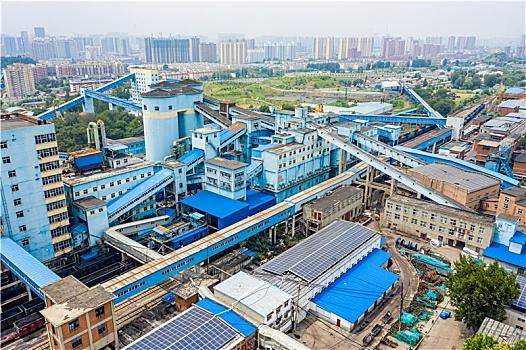
In recent years, due to changes in the working face conditions of the mine, the fine particle content and moisture content of the raw coal at Zhao Gu Yi Mine have increased, resulting in difficult screening. In addition, due to limitations in coal preparation process and production capacity, the coal preparation plant at Zhao Gu Yi Mine cannot directly use fine coal as a product after the raw coal is graded. The original coal is directly wet screened, and after the screened material is completely de-mudded through a three-product heavy medium cyclone sorter, the washed fine coal, medium coal, and gangue are mixed again to enter the product bin, resulting in a large amount of coal slurry and an increase in coal slurry production. Furthermore, due to environmental requirements, the coal slurry drying system has been shut down, increasing the difficulty of selling coal slurry and causing the coal slurry to accumulate, severely restricting normal coal preparation plant production. Therefore, while meeting customer needs, how to optimize the product structure and reduce coal slurry has become a key focus of the coal preparation plant's work.
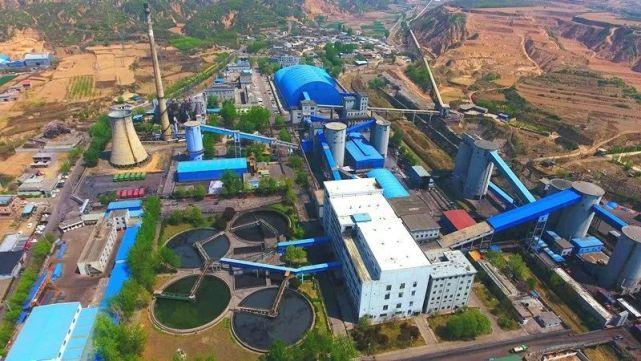
2. Importance of Coal Slurry Reduction
2.1 Compliance with China's Energy and Environmental Protection Policies
Coal slurry reduction conforms to the national requirements of "accelerating the improvement of the technological level of the coal industry, increasing the safe and reliable coal supply capacity, promoting the sustained, healthy, stable, and coordinated development of the coal industry," "enhancing the clean utilization of coal," "energy conservation, emission reduction, environmental protection," and the requirements of sustainable development. It is also an effective means and way to improve the quality of coal products and extend the coal industry chain.
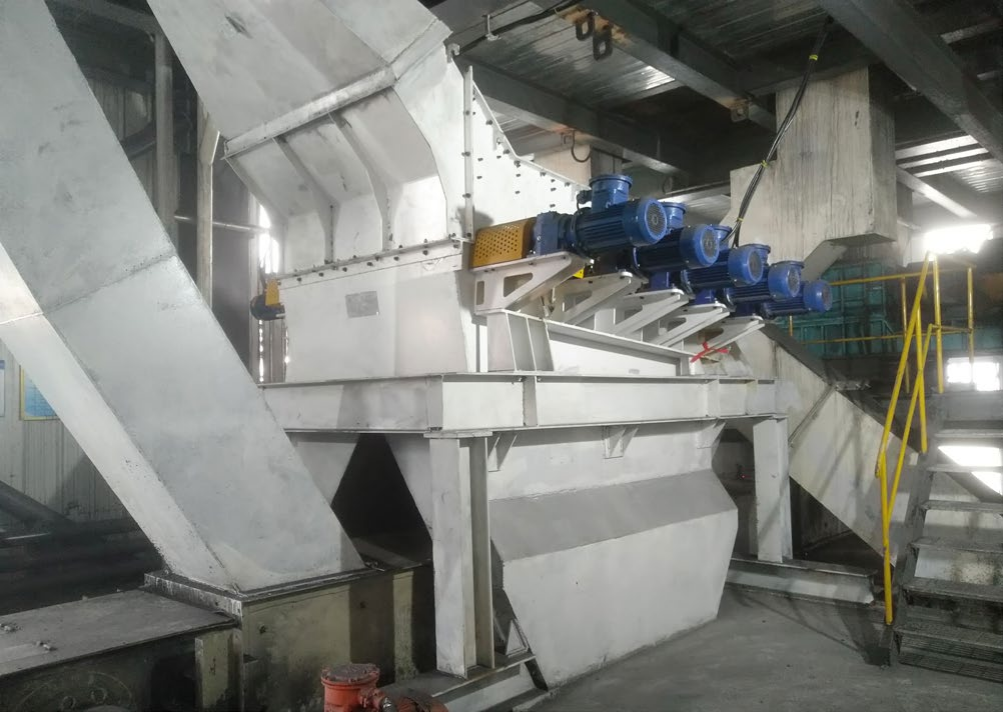
2.2 Product Structure Adjustment to Meet Market Demand
The original design of the coal preparation system cannot directly produce fine coal products. After coal grading, fine coal can only be selected as washed fine coal through a three-product heavy medium cyclone sorter. According to market demand and the company's requirements for product structure adjustment, it is necessary to add a set of fine coal screening system to achieve the goal of product structure adjustment and coal slurry reduction.
2.3 Requirements to Improve Enterprise Economic Benefits
Coal slurry reduction can reduce the amount of coal slurry water in the washing system, independently produce screened fine coal, improve the quality of coal products, increase product diversification, and enhance the economic benefits of enterprises.
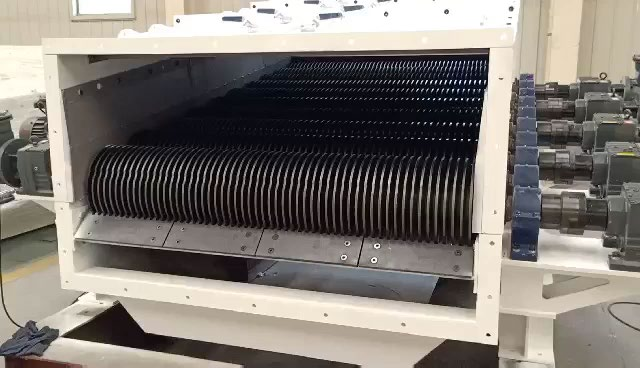
3. Analysis of Raw Coal Particle Size Composition
The results of the raw coal screening test at the coal preparation plant are shown in Table 1. From Table 1, it can be seen that the ash content of the raw coal is 43.91%, belonging to high ash content coal. The yield of particle size greater than 50 mm is 20.95%, with an ash content of 68.32%, indicating a high gangue content coal. The yield of lump coal with particle size greater than 25 mm is 35.01%, and the yield of particle sizes 13-10 mm and 10-8 mm is 7.43% and 5.77%, respectively, with low yields in each particle size. The yield of particle size 8-0 mm is 40.69%, with a yield of 25.38% for particle size 3-0 mm, indicating a high yield of powdered coal. The yield of native coal slurry with a size less than 0.5 mm is 17.50%, with an ash content of 52.54%, indicating that the gangue is relatively soft and fragile.
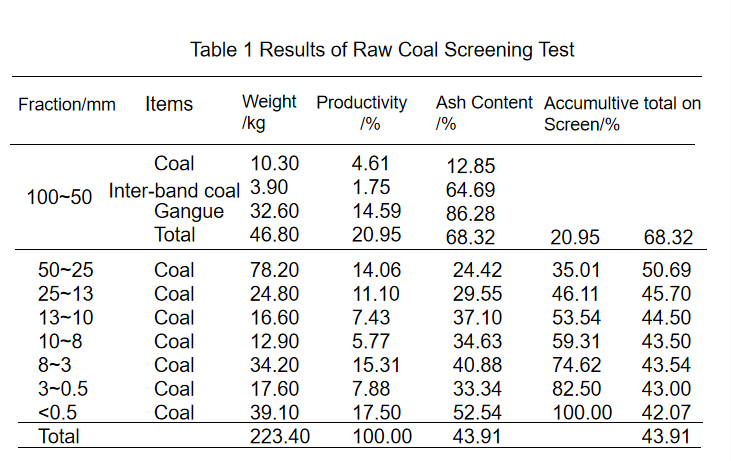
In the existing production process, due to the fact that all raw coal less than 13 mm enters the washing process, it causes difficulties in the treatment of coal slurry water, resulting in a large amount of coal slurry production, equipment losses, and increased washing costs. Therefore, the coal preparation plant considers process transformation to add a process step where fine coal is directly used as a product, reducing the amount of native coal slurry entering the coal slurry water system, achieving a reduction in coal slurry production, alleviating environmental pressure, and increasing the economic benefits of the enterprise.